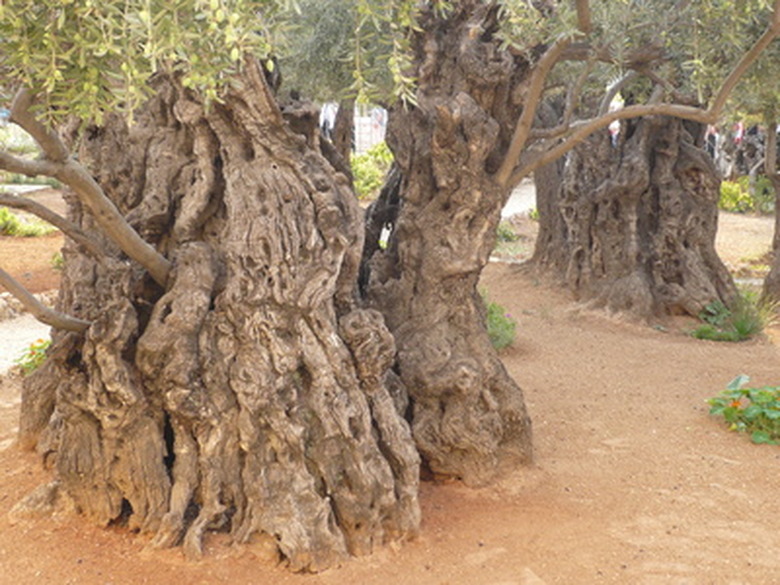What Plants Are Common In Italy?
Italy holds over 25 million acres of farmland, producing an array of fruits, herbs, vegetables and plants. A lot of these plants are staples of the country's cuisine, contributing to the ideals of fresh produce in the Italian lifestyle. Some common plants in Italy includes olives, figs, grapes and tomatoes that thrive in the country's rich, fertile soil.
Olives
Olives and Italy go hand-in-hand, for olive oil production that dates back to 7th century B.C., and fresh meaty produce. According to the Food and Agriculture Organization of the United Nations (FAO), Italy is the second largest produce of olives in the entire world, filling fields in southern Italy for miles in colors of pink, moss green and indigo black. Olives in Italy are used often in the kitchen, from being chopped up raw for salads or added to beverages, to mashed into tapenades or grilled up on skewers.
Tomatoes
Tomatoes are a solid column in Italian cuisine, incorpoarted into almost every course and type of dish, such as tomato sauces and stuffed whole. Tomato plants are grown most often in southern Campagna, Sicily and northern Puglia. As the largest producer of tomato plants in the world, (according to the FAO). Tomato plants in Italy require partial sun and have no tolerance for frost.
- Italy holds over 25 million acres of farmland, producing an array of fruits, herbs, vegetables and plants.
- A lot of these plants are staples of the country's cuisine, contributing to the ideals of fresh produce in the Italian lifestyle.
Grape Vines
Italy is perhaps most well-known around the world for its grape production that creates several wines from the two million acres of grape vineyards. According to the Wine Institute, Italy is the third largest grape producer in the world, with grapes growing everywhere from shorelines to rocky dry canyons in almost every region. Grapes are also grown to eat fresh, as a part of the dessert cheese plates, to make juice and sauces, and added to dishes as an accent.
Figs
Figs flourish in the Italian landscape as one of the most simple plants to grow. Although they resemble a green plum, figs are usually dried out to a silver-dollar size and eaten as a sweet mild treat. When eaten fresh, the tender pink meat inside is juicy and tart. Figs are paired with cheese and wine, eaten raw, used to make sauces, added to salads and grilled. Wild Italian figs thrive on rocky hillsides and in full sun, requiring little maintenance and water.
- Italy is perhaps most well-known around the world for its grape production that creates several wines from the two million acres of grape vineyards.
- Figs are paired with cheese and wine, eaten raw, used to make sauces, added to salads and grilled.
